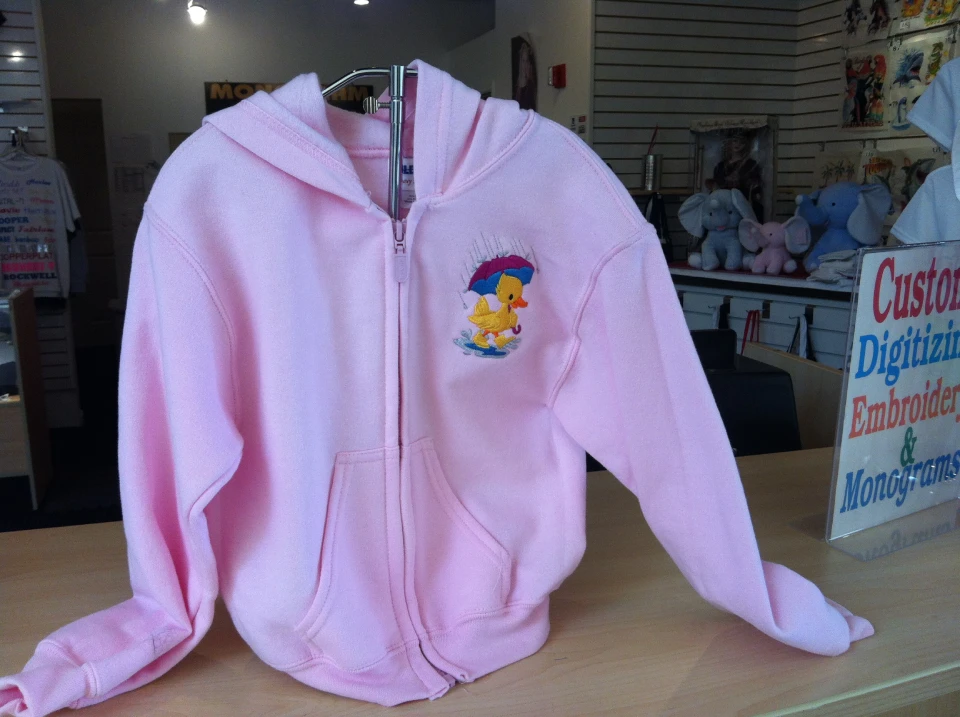The Art of Custom-made Needlework: Opening the Tricks to Creating One-of-a-kind and Memorable Designs
The keys to developing personalized needlework designs that astound the eye and leave a long-term impact lie in a fragile equilibrium of method, imagination, and attention to information. As we dig into the world of custom-made embroidery, we uncover the nuanced interaction in between thread selection, sew complexity, and design customization that elevates a simple garment to a work of art.
Picking the Right Needlework Threads
When picking embroidery threads, what key aspects should you take into consideration to ensure the most effective results for your custom layouts? The selection of embroidery thread is essential in determining the last result of your embroidered design. Among the primary considerations is the material of the string. Different products such as cotton, polyester, rayon, and silk use differing levels of luster, sturdiness, and appearance. It is necessary to select a string material that matches the material you are embroidering on and lines up with the wanted appearance of the style.
Thicker strings can include dimension and appearance to your design, while finer strings are suitable for elaborate details and tiny message. In addition, thinking about the color fastness and washability of the string is vital to guarantee that your customized styles maintain their top quality and vibrancy over time.
Checking Out Different Stitch Methods
To delve into the world of 'Exploring Various Stitch Methods', one must understand the intricacies and subtleties that each stitching technique brings to the art of embroidery. Different stitch strategies not only include visual passion but also add to the overall structure and dimension of the style. One preferred stitch strategy is the satin stitch, which involves carefully packed parallel stitches to produce a smooth and glossy surface area, suitable for filling out shapes and developing bold details.
On the other hand, the backstitch is a flexible strategy frequently made use of for outlining and adding great information. It includes sewing in reverse to create a solid line of needlework. In addition, the French knot stitch adds a responsive component to layouts, perfect for creating distinctive accents like flower centers or decorative touches.
Exploring different stitch methods allows embroiderers to have fun with light, shadow, and depth within their layouts, elevating the visual charm and creative top quality of their needlework projects. By grasping different sewing techniques, one can open unlimited opportunities for creating unique and unforgettable custom-made needlework items.
Incorporating Personalized Design Aspects
Having actually checked out the intricacies of various stitch methods such as the satin stitch, backstitch, and French knot, moved here the emphasis now shifts in the direction of integrating customized style aspects in customized embroidery tasks. Customized design elements play an important role in making needlework jobs truly one-of-a-kind and unforgettable.
Another way to include customized design aspects is by including icons or concepts that hold unique meaning to the recipient or mirror their rate of interests and individuality. As an example, including a favored flower, pet, or hobby-related symbol can make the needlework design much more significant and personalized. Furthermore, picking shades that reverberate with the recipient or align with the designated motif can even more enhance the customization of the embroidery job.
Understanding the Art of Color Sychronisation

One key facet of color control is understanding color theory. This consists of knowing exactly how various colors connect with each other, the emotions they communicate, and just how they can be integrated to produce aesthetically attractive layouts. By using shade theory concepts, embroiderers can create harmonious shade palettes that improve the total look of the layout.
In addition, paying attention to comparison is essential in color control. Utilizing contrasting shades can help specific components of the design pop, enhance readability, and develop a visually vibrant needlework piece. By mastering the art of color control, embroiderers can elevate their layouts and create memorable pieces that reverberate with customers and visitors alike.
Enhancing Appearance With Advanced Needlework Stitches

French knots, as an example, are excellent for adding little, increased dots to your layout, mimicking the appearance of beads or producing a distinctive surface area. Bullion knots, on the various other hand, can be used to create twisted, ropelike elements that include a glamorous feeling to the needlework. Seed sewing entails tiny, scattered stitches that can fill out areas with a speckled texture, while turkey work creates fluffy, dimensional accents reminiscent of animal fur or foliage. Experimenting with these advanced embroidery stitches allows you to push the boundaries of conventional embroidery and produce really distinct and visually attractive structures in your styles.
Final Thought
Finally, the art of personalized needlework includes a combination of picking the appropriate strings, checking out different stitch methods, integrating individualized design components, understanding color a knockout post coordination, and boosting structure with sophisticated stitches. By understanding and applying these crucial elements, embroiderers can develop special and memorable styles that showcase their creative thinking and skill. Needlework lovers can open the tricks to creating gorgeous and custom pieces that stand out and leave an enduring impression.